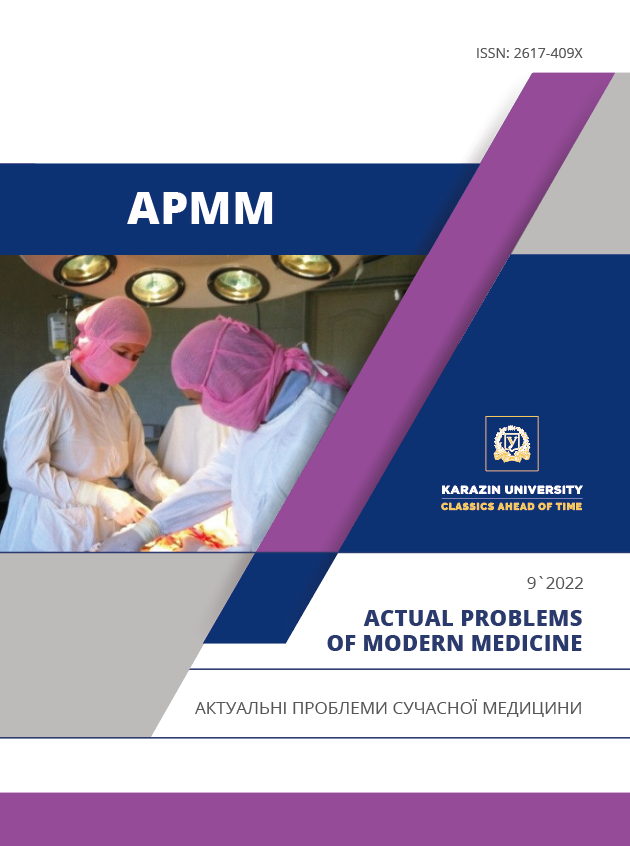Вплив спілкування та антропометричних параметрів на ментальне здоров'я школярів у період після відміни жорстких каратнтинних заходів внаслідок пандемії COVID-19: поздовжнє дослідження
Анотація
Вступ. Пандемія COVID-19 стала тригером напруження систем адаптації у різних груп населення у тому числі внаслідок соціальної ізоляції. Тому дослідження цих процесів в різних популяційних групах є актуальним. Оскільки дефіцит спілкування є одним з чинників ризику розвитку метаболічних розладів та неінфекційних хронічних захворювань, а також розладів ментального здоров’я і зв’язок цей двонаправлений, метою нашого дослідження було вивчення впливу особливостей спілкування школярів на їх ментальне здоров’я під час адаптації до впливу стресових чинників з урахуванням їх метаболічного статусу. Матеріали та методи дослідження. Проведено вивчення антропометричних показників та особливостей спілкування 114 дітей школярів (56 хлопців, 58 дівчат, середній вік 12,3±0,2 років). Інформована згода від батьків отримана. Протягом 5 тижнів після відміни локдауну було проведене щотижневе дослідження рівня тривожно-депресивних проявів (ТДП) за допомогою опитувальника RCADS-P-25. Для визначення взаємозв’язків між показниками застосовано ANOVA, таблиці спряженості, множинну лінійну регресійну модель. Для статистичного аналізу використана програма STATISTICA 8.0. Результати. Серед школярів обстеженої когорти частка дітей з надмірною вагою та ожирінням становила 26,3±4,1 %. У 34,6±4,7 % учнів виявлені труднощі у спілкуванні з однолітками. Встановлено, що у дітей з надмірною вагою та ожирінням рівень ТДП був достовірно вищий, ніж у групі з нормальною та недостатньою масою тіла протягом усього дослідження (F=10,9; p<0,001). Визначено, що показники ТДП були значуще вищими (F=17,6; p<0,001) у групі дітей, яка мала труднощі з «живим» спілкуванням з однолітками. Найвищі показники тривожно-депресивних проявів були визначені у дітей, що спілкувались у соцмережах 4 години і більше або не спілкувались зовсім, а найнижчі показники мали діти, що спілкувались 1-2 години на добу (F=9,6; p<0,001). Не визначено статистично достовірного впливу кратності спілкування у соціальних мережах на показники ТДП (p>0,6). Висновки. Спілкування у соціальних мережах з однолітками тривалістю 1-2 години було сприятливим чинником адаптації у даному дослідженні, а більше 4 годин – несприятливим, що потребує додаткового вивчення. Також несприятливими факторами для адаптації школярів є труднощі з «живим» спілкуванням та надмірна маса тіла. Враховуючи отримані результати, необхідно розвивати як комунікаційні навички школярів, так і виховувати культуру спілкування у соціальних мережах.
Завантаження
Посилання
Quinn V JM, Dhabalia TJ, Roslycky LL, Wilson V JM, Hansen JC, Hulchiy O, Golubovskaya O, Buriachyk M, Vadim K, Zauralskyy R, Vyrva O, Stepanskyi D, Ivanovitch PS, Mironenko A, Shportko V, McElligott JE. COVID-19 at War: The Joint Forces Operation in Ukraine. Disaster Med Public Health Prep. 2021 Mar 25:1-8. DOI: 10.1017/dmp.2021.88.
Dhawan M, Choudhary OP, Priyanka, Saied AA. Russo-Ukrainian war amid the COVID-19 pandemic: Global impact and containment strategy. Int J Surg. 2022 Jun;102:106675. DOI: 10.1016/j.ijsu.2022.106675.
Wandschneider L, Namer Y, Davidovitch N, Nitzan D, Otok R, Leighton L, Signorelli C, Middleton J, Martin-Moreno JM, Chambaud L, Lopes H, Razum O. The Role of Europe's Schools of Public Health in Times of War: ASPHER Statement on the War Against Ukraine. Public Health Rev. 2022 Mar 16;43:1604880. DOI: 10.3389/phrs.2022.1604880.
Carta MG, Orrù G, Barberini L. War and pandemic: a negative synergism could amplify the catastrophe. J Public Health Res. 2022 Mar 25;11(2):3016. DOI: 10.4081/jphr.2022.3016.
Chaban OS, Khaustova OO. Medyko-psykholohichni naslidky dystresu viiny v Ukraini: shcho my ochikuiemo ta shcho potribno vrakhovuvaty pry nadanni medychnoi dopomohy? Ukrainskyi medychnyi chasopys. 2022;4(150):1-11. DOI: 10.32471/umj.1680-3051.150.232297. [in Ukrainian].
Jain N, Prasad S, Czárth ZC, Chodnekar SY, Mohan S, Savchenko E, Panag DS, Tanasov A, Betka MM, Platos E, Świątek D, Krygowska AM, Rozani S, Srivastava M, Evangelou K, Gristina KL, Bordeniuc A, Akbari AR, Jain S, Kostiks A, Reinis A. War Psychiatry Identifying and Managing the Neuropsychiatric Consequences of Armed Conflicts. J Prim Care Community Health. 2022 Jan-Dec;13:21501319221106625. DOI: 10.1177/21501319221106625.
Yelizarova OT, Hozak SV, Polka NS, Parats AM, Stankevych TV. Profilaktyka khronichnykh neinfektsiinykh zakhvoriuvan v umovakh pandemii Sovid-19. Dovkillia ta zdorovia. 2021.2(99):4-14. DOI: 10.32402/dovkil2021.02.004. [in Ukrainian].
Maksymenko SD, Soloviienko VO. Zahalna psykholohiia: Navch. posibnyk. K.: MAUP, 2000. 256 s . [in Ukrainian].
O'Reilly M, Dogra N, Whiteman N, Hughes J, Eruyar S, Reilly P. Is social media bad for mental health and wellbeing? Exploring the perspectives of adolescents. Clin Child Psychol Psychiatry. 2018 Oct;23(4):601-613. DOI: 10.1177/1359104518775154.
Hamm MP, Newton AS, Chisholm A, Shulhan J, Milne A, Sundar P, Ennis H, Scott SD, Hartling L. Prevalence and Effect of Cyberbullying on Children and Young People: A Scoping Review of Social Media Studies. JAMA Pediatr. 2015 Aug;169(8):770-7. DOI: 10.1001/jamapediatrics.2015.0944.
O'Reilly M. Social media and adolescent mental health: the good, the bad and the ugly. J Ment Health. 2020 Apr;29(2):200-206. DOI: 10.1080/09638237.2020.1714007.
Yang YC, Boen C, Gerken K, Li T, Schorpp K, Harris KM. Social relationships and physiological determinants of longevity across the human life span. Proc Natl Acad Sci U S A. 2016 Jan 19;113(3):578-83. DOI: 10.1073/pnas.1511085112.
Fairbank EJ, McGrath JJ, Henderson M, O'Loughlin J, Paradis G. Social support and C-reactive protein in a Québec population cohort of children and adolescents. PLoS One. 2022 Jun 22;17(6):e0268210. DOI:10.1371/journal.pone.0268210.
Pachucki MC, Goodman E. Social Relationships and Obesity: Benefits of Incorporating a Lifecourse Perspective. Curr Obes Rep. 2015 Jun;4(2):217-23. DOI: 10.1007/s13679-015-0145-z.
Yelizarova OT, Hozak SV, Parats AM, Stankevych TV, Diuba NM. Rozlady adaptatsiinykh reaktsii u ditei shkilnoho viku z nadmirnoiu vahoiu ta ozhyrinniam pid chas vprovadzhennia karantynnykh zakhodiv u zviazku z pandemiieiu Covid-19. Ekolohiia ta medytsyna. Materialy mizhnar. nauk.-prakt. konf.: zb., 2021. S.44-50. Available from: http://reposit.uni-sport.edu.ua/handle/787878787/3190. [in Ukrainian].
Ebesutani C., Reise S.P., Chorpita B.F. et al. The Revised Child Anxiety and Depression Scale-Short Version: scale reduction via exploratory bifactor modeling of the broad anxiety factor. Psychol Assess. 2012 Dec;24(4):833-45. DOI: 10.1037/a0027283.
Waist Circumference and Waist–Hip Ratio: Report of a WHO Expert Consultation. WHO. Geneva, 2008. 47 p.
Ponomarova KI. Formuvannia komunikatyvnoi kompetentnosti molodshykh shkoliariv u protsesi navchannia ukrainskoi movy: metodychnyi posibnyk. Kyiv: KONVI PRINT, 2020: 88 s. [in Ukrainian]
Balakirieva OM, Bondar TV. ta in. Sotsialna obumovlenist ta pokaznyky zdorovia ta povedinkovi oriientatsii uchnivskoi molodi» : monohr. nauk. red. O. M. Balakirieva ; YuNISEF, HO «Ukr. in-t sots. doslidzh. im. O. Yaremenka». K. : Polihrafichnyi tsentr «Foliant», 2019. 127 s. [in Ukrainian]




